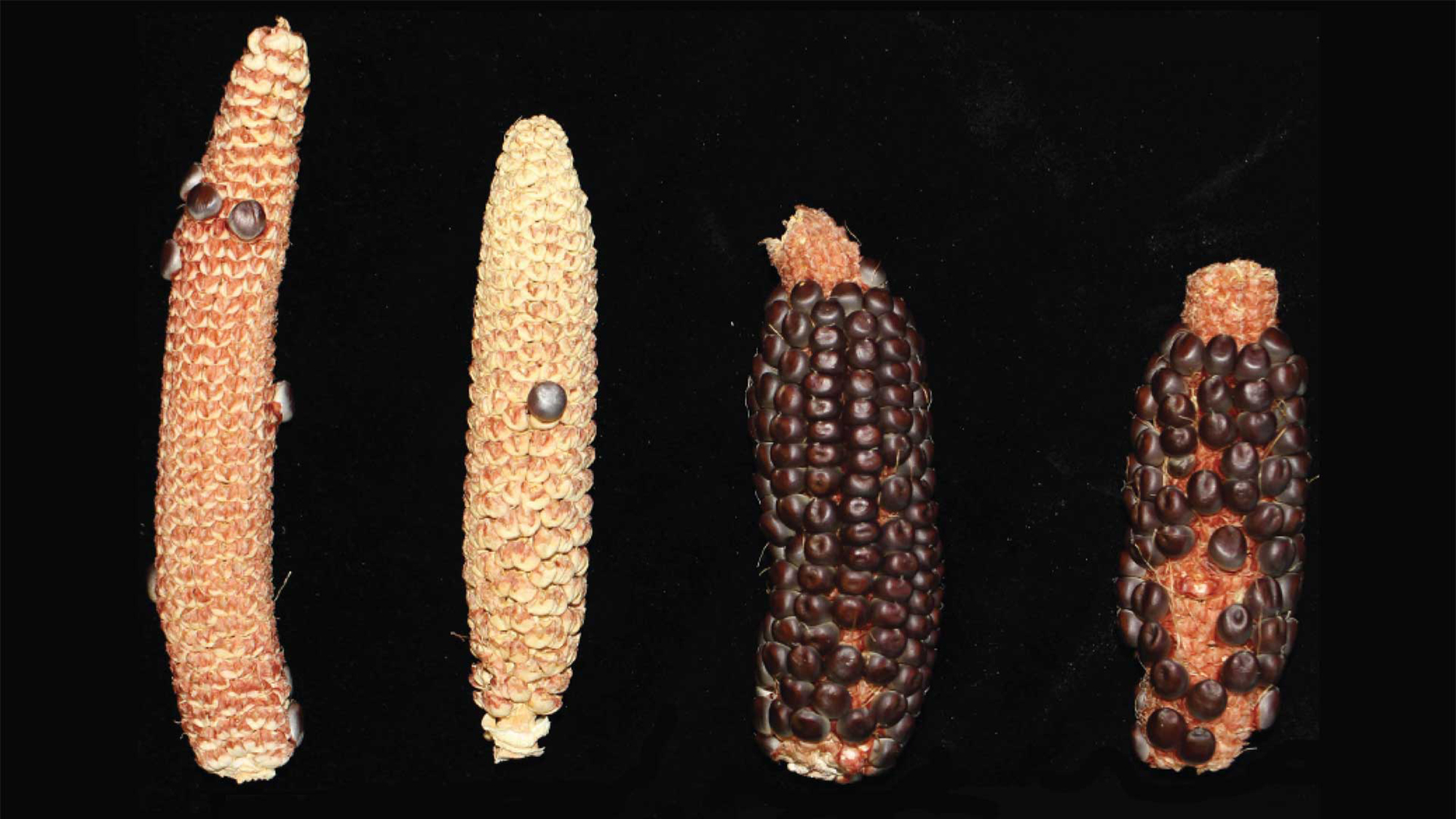

The story of corn is anything but corny. It’s a tale of resilience and survival–all because maize was selfish (genetically). Maize and its numerous varieties have quickly adapted to several types of climates over several millennia, while feeding countless generations in the Americas. Now, a team of scientists believe that a genetic process called selfish inheritance may be responsible for this rapid evolution. The findings are described in a study published August 7 in the journal Nature, and could have applications beyond agriculture.
The maize maze
About 9,000 years ago, maize was first domesticated by Indigenous peoples in the Mexican lowlands. Roughly 5,000 years later, maize crossed with a different type from the Mexican highlands called teosinte mexicana. The intermingling resulted in cold adaptability, and the crop quickly spread across the continent. Scientists are still not quite certain how it achieved all of this so quickly.
[Related: The bizarre botany that makes corn a fruit, a grain, and also (kind of) a vegetable.]
“Civilizations depend on the domestication of staple crop plants like corn, and like humans, crops often undergo multiple rounds of evolution. Modern humans, for example, interbred with Neanderthals in Europe and Denisovans in Asia,” study co-author and Cold Spring Harbor Laboratory (CSHL) geneticist Rob Martienssen tells Popular Science. “Modern maize interbred with teosinte mexicana only 4,000 years ago, and gained multiple beneficial genes in a very short time.”
Martienssen studies RNA interference, the process when small RNAs silence genes and can manipulate how the genes are expressed. University of Wisconsin geneticist Jerry Kermicle reached out to Martienssen with a curious observation. While crossing sem-sterile teosinte hybrids with traditional maize, he noticed that their offspring were behaving unusually. With a normal inheritance, the offspring should have eventually become completely sterile or fertile. Instead, anytime that Kermicle crossed the hybrids with maize, all of the resulting offspring were semi-sterile. The answer may be a bit selfish.
Selfish inheritance
Previously, scientists thought that selfish genetic systems–or gene drives–were quite rare in nature.
“Finding one in corn suggested it [gene drives] might have played an important role in the mysterious origin of maize,” says Martienssen.
In the new study, Martienssen and CSHL graduate student Ben Berube sequenced the genomes of hundreds of pollen grains of the semi-sterile offspring. They found that the same pieces from the teosinte genome were present in each–one on chromosome 5 and one on chromosome 6. These were always inherited, so the genes responsible for this result must be somewhere around those chromosomes.

They looked closer at chromosome 5 and found a gene called Dicer-like 2. This gene makes a group of small RNAs that are always present in the semi-sterile hybrids, but not traditional maize. With this data, the team was able to pinpoint a “selfish” genetic system they call the Teosinte Pollen Drive. The greedy system eliminates the competing pollen grains that lack this gene drive. The maize-teosinte hybrids then pass along certain traits through males more often than females.
“The most surprising finding was that modern maize had become ‘immune’ to the selfish inheritance, by mutation of a single gene in pollen that could be traced from wild grasses, through tropical maize and popcorns, all the way to modern maize,” says Martienssen. “This suggests the selfish genetic system was active over a long period of time.”
‘The Neanderthal of maize’
The findings could have wider implications on the agriculture industry, but also reveal more about the process of domestication in all living things. If teosinte mexicana is what Martinssen calls “the Neanderthal of maize,” for its ability to interbreed, we may have found a missing link in this selfish gene drive that could explain how corn was able to thrive across the Americas. It also may explain why some small RNAs are so common in plant and animal sperm cells–humans included.
[Related: Mummified poop reveals a diverse ancient Caribbean diet.]
“Basic discoveries in plant biology can have implications far beyond agriculture. The small RNAs we describe in maize pollen are powerful agents of inheritance and evolution, and similar small RNAs are found in sperm cells from animals, including our own,” says Martienssen. “It is possible they played similar roles in animal domestication, and perhaps even in human evolution.”